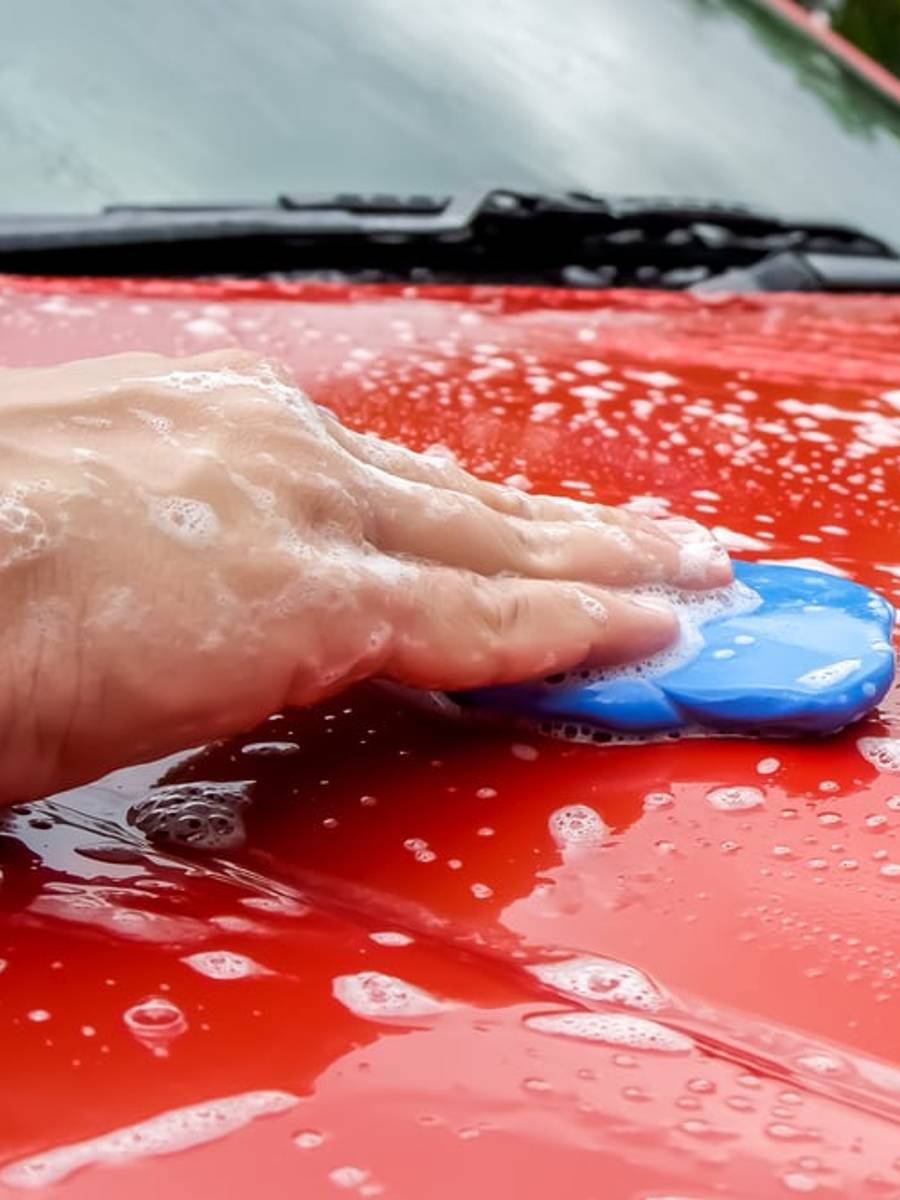Just How Ceramic Layer Protects Your Automobile's Paint and Maintains It Looking New
Ceramic covering has emerged as a famous remedy for auto paint defense, offering a robust protection versus a selection of ecological threats. The intricacies of how this innovation operates and its benefits over standard approaches call for a closer assessment, exposing compelling reasons to consider this innovative method for your lorry.
What Is Ceramic Coating?
Ceramic coating is regularly considered as an innovative advancement in automotive paint protection. ceramic coating. This advanced item is a fluid polymer that chemically bonds with the automobile's factory paint, forming a safety layer that improves toughness and visual allure. Unlike standard wax or sealants, which give only temporary defense, ceramic finishes provide long-lasting results, often extending a number of years with proper upkeep
The primary parts of ceramic finishes are silicon dioxide (SiO2) and titanium dioxide (TiO2), which add to their hydrophobic residential or commercial properties. This hydrophobic nature permits water to grain and roll off the surface, efficiently protecting against impurities like dust, crud, and bird droppings from adhering to the paint. Automobiles treated with ceramic layers require less frequent cleaning and are easier to preserve.
Furthermore, ceramic finishes provide UV security, which aids avoid oxidation and fading of the paint as a result of sun exposure. This aspect not just keeps the automobile's aesthetic appeal yet also contributes to its resale worth with time. In general, ceramic finishings represent a significant jump ahead in the realm of vehicle care, providing a robust solution for vehicle proprietors looking for to protect their financial investment.
Exactly How Ceramic Layer Functions
Ceramic finish consists of a liquid polymer that chemically bonds with the factory paint of an automobile (ceramic coating). The primary element of ceramic coatings is silica dioxide (SiO ₂), which provides premium solidity and resilience versus scratches, UV rays, and various other exterior contaminants.
When applied correctly, the covering passes through the tiny pores of the paint surface, producing a semi-permanent bond. This leads to a smooth, glossy finish that boosts the lorry's aesthetic appeal while all at once pushing back water, dust, and grime. The hydrophobic nature of the covering makes certain that impurities glide off easily, decreasing the frequency of washing and the probability of scratches during cleansing.

Advantages of Ceramic Layer
The application of ceramic covering uses countless advantages that considerably boost the protection and look of a vehicle's paint. Among the key advantages is Check Out Your URL its capacity to create a robust, hydrophobic layer that wards off water, dirt, and various other contaminants. This property not only keeps the surface cleaner for longer durations yet also makes cleaning the vehicle much easier and less labor-intensive.
Additionally, ceramic coverings offer exceptional protection against damaging UV rays, which can bring about oxidation and fading with time. ceramic coating. This UV resistance aids keep the initial shade and gloss of the automobile's paint, consequently maintaining its aesthetic appeal for years
Furthermore, ceramic coatings are chemically immune, supplying defense versus acidic contaminants such as bird droppings, tree sap, and roadway gunk. This resistance helps protect against etching and discoloration, which can jeopardize the integrity of the paint.
Lastly, the resilience of ceramic finishings expands beyond traditional waxes and sealers, typically lasting numerous years with appropriate maintenance. This resilient defense eventually converts into price savings, as car owners can minimize the regularity of reapplication and upkeep initiatives. On the whole, ceramic layers stand for a considerable financial investment in vehicle care.
Contrasting Ceramic Coating to Traditional Techniques
Frequently ignored in the quest for ideal car defense, the contrast in between ceramic covering and standard methods such as waxing and sealers exposes considerable differences in toughness, efficiency, and maintenance. Conventional waxes typically offer a temporary protective layer, frequently lasting just a few weeks to a couple of months, while sealers can expand this period to numerous months. In comparison, ceramic coatings offer a robust, resilient guard that other can withstand for numerous years when properly used.
In regards to performance, ceramic coverings exhibit exceptional hydrophobic properties, effectively pushing back water and impurities, which stops dust and crud from sticking to the surface area. This residential or commercial property not only enhances the vehicle's look yet additionally simplifies the cleaning process. Typical waxes and sealers, while they might use some water resistance, do not match the degree of security supplied by ceramic finishings.
The maintenance routine for both choices deviates dramatically. While traditional methods call for constant reapplication and maintenance, ceramic finishes are created to endure the rigors of day-to-day driving with very little intervention, making them an extra effective choice for automobile enthusiasts seeking long-lasting security. Ultimately, the choice between ceramic coating and typical approaches pivots on the preferred level of defense and maintenance dedication.
Maintenance Tips for Porcelain Coated Cars
Preserving a ceramic layered car needs a calculated approach to make sure the durability of the safety layer. Use a pH-neutral shampoo and microfiber laundry gloves to prevent damaging the coating while properly eliminating dust and impurities.
Additionally, avoid automatic cars and truck cleans that utilize brushes, as these can jeopardize the stability of the ceramic finish. Rather, select a touchless clean or a hand clean. After cleaning, drying is important; make use of a top quality microfiber towel to avoid water areas.
Applying a ceramic-specific maintenance spray can enhance the covering's hydrophobic buildings and add an added layer of protection. This should be done occasionally, relying on your driving problems.

Final Thought
In conclusion, ceramic finishing serves as an efficient protective step for vehicle paint, using a sturdy obstacle versus ecological damage and enhancing the lorry's look at this site visual allure. Taking on ceramic layer modern technology can dramatically expand the life-span of an automobile's outside, ensuring it remains visually appealing and well-protected.